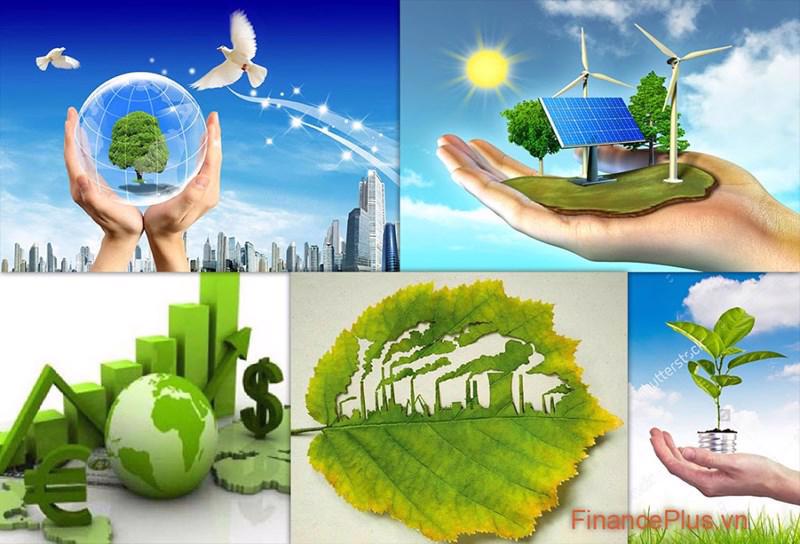Deputy Prime Minister Tran Hong Ha led a high-level meeting on March 24 to review and provide insights into a draft decree amending Government Decree No. 06/2022/ND-CP, which governs greenhouse gas emission reduction and ozone layer protection. The proposed new roadmap aligns with Vietnam’s commitment to international climate agreements and aims to implement key provisions of the Law on Environmental Protection.
Vietnam plans to allocate greenhouse gas emission quotas to 150 facilities with significant emissions across the thermal power, steel production, and cement production sectors in its initial phase. Collectively, these facilities contribute approximately 40 per cent of the nation’s total greenhouse gas emissions.
Emission-intensive sectors
According to the drafting committee, the proposed regulations in the draft aim to strengthen greenhouse gas inventory efforts, verify inventory results, and implement measures to reduce emissions. The decree also seeks to enhance decentralization and administrative reforms, cutting compliance costs for businesses involved in emission inventory verification, mitigation measures, and emission quota allocation.
Sectoral management ministries will propose annual emission quotas for facilities under their jurisdiction. The Ministry of Agriculture and Environment (MAE) will compile these proposals and submit them to the Prime Minister for approval of the total emission quotas by phase and year before overseeing their allocation.
The revised regulations also refine policies on the carbon market, clearly defining eligible participants for emission quota and carbon credit trading. The draft introduces new provisions for a National Registry System for emission quotas and carbon credits, supporting better oversight. It further details trading activities on carbon exchanges and establishes mechanisms for domestic credit trading and offsets.
Under the draft decree, sectoral ministries will be responsible for approving technical standards for carbon credit generation, project registration, modifications to project participants, project deregistration, and the issuance of carbon credits within their respective sectors.
New administrative procedures have been introduced for verifying greenhouse gas inventory results at facilities receiving allocated quotas, as well as for domestic carbon credit trading and offsets. However, these procedures have been streamlined to reduce the number of entities requiring carbon credit certification and to simplify the verification process for emission quotas.
The draft decree outlines a phased emission quota allocation plan over three periods: 2025-2026, 2027-2028, and 2029-2030. The initial phase will focus on high-emission facilities in three key industries: thermal power, steel production, and cement manufacturing. An estimated 150 facilities will receive quotas in this first phase, covering approximately 40 per cent of the country’s total greenhouse gas emissions.
Regulatory framework and roadmap
At the meeting, representatives from the Ministry of Industry and Trade, the Ministry of Construction, and the Ministry of Finance proposed the establishment of regulations, criteria, methodologies, and selection criteria for independent consulting organizations and experts to conduct greenhouse gas emission inventories and verify related results. This aims to ensure objectivity, fairness, and transparency.
The ministries also suggested developing a set of criteria for allocating emission quotas across different sectors, regions, and businesses, ensuring compatibility between domestic quota and carbon credit regulations and international standards. They emphasized the need to maintain the quality of traded emission quotas and carbon credits in the market.
Deputy Prime Minister Ha noted that the draft decree has incorporated international developments, practical experiences, and existing knowledge, reflecting Vietnam’s commitment to international agreements on greenhouse gas emission reductions. The draft has garnered interest from domestic businesses, trade partners, and international organizations.
However, as this is a highly technical decree subject to ongoing changes, the MAE must ensure alignment with sectoral laws and international agreements. The ministry should also adopt a controlled “sandbox” approach to continuously update technical aspects that may evolve.
Since this is a new field, new administrative procedures will be required for State management. However, these procedures must remain as simple and streamlined as possible. The decree should support the gradual adoption of technology, improved management, and enhanced absorption measures to reduce emissions while also enabling Vietnamese goods to remain competitive in global markets. “Therefore, the regulations on standards, methodologies, and policies must align with international practices while closely adhering to the specific standards of each market, business sector, and enterprise type,” the Deputy Prime Minister emphasized. “This should not be a one-size-fits-all approach but rather flexible and diverse, ranging from the highest and most stringent standards to the most relaxed ones, depending on each market.”
The decree must delegate responsibilities to ministries and sectors for establishing and issuing technical standards related to emission quotas and carbon credits. It should also define conditions for the establishment and operation of independent consulting organizations and experts responsible for measuring, verifying, reporting, and recognizing greenhouse gas emissions and carbon credit data, ensuring mutual recognition among international organizations and partners.
He also provided guidance on regulations for managing carbon credits as a tradable commodity in the carbon market, decentralizing emission quota management to specialized ministries, and applying technology and digitalization in the management and operation of emissions and carbon credits.
Decision No. 13/2024/QD-TTg, dated August 13, 2024, updates the list of sectors and facilities required to conduct greenhouse gas inventories, including 2,166 facilities: 1,805 in the industry and trade sector, 75 in transportation, 229 in construction, and 57 in the natural resources and environment sector. Six sectors are required to conduct greenhouse gas inventories: energy, transportation, construction, industrial processes, agriculture, forestry and land use, and waste management.
Meanwhile, according to Decree No. 06/2022/ND-CP, dated January 7, 2022, on greenhouse gas emission reductions and ozone layer protection, enterprises subject to greenhouse gas inventory requirements must submit their reports to the provincial People’s Committee for verification by March 31, 2025.
Under Decision No. 232/QD-TTg, dated January 24, 2025, which approves the roadmap for the establishment and development of Vietnam’s carbon market, the regulatory framework for greenhouse gas emission quota trading, carbon credits, and credit exchange mechanisms will be developed before June 2025 to provide a legal foundation for the pilot operation of a carbon trading platform. Infrastructure will also be built to facilitate market operations.
From June 2025 to the end of 2028, Vietnam will pilot a domestic carbon trading platform while continuing to refine the legal framework for the carbon market.
From 2029 onwards, the domestic carbon exchange will be officially operational. The scope of emission quota allocations to different sectors and facilities will be studied and expanded in line with the roadmap.









 Google translate
Google translate